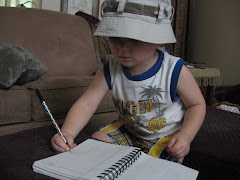Dakos, K. (1996). The goof
who invented homework and other school poems. Ill. D. Brunkus. New York , NY
Students spend so much time
at school, so what better way to include poetry than with poetry about school? So many things happen at school, and Dakos’s
book of school poems covers lots of topics that relate to school, from
beginning of the year to the end. Her
descriptive poems include poems that relate to holidays celebrated during the
school year such as the first day of school (“Have a Great School Year”),
Halloween (“Oooooooooooo”), Thanksgiving (“Thanksgiving”) and Valentine’s Day
(“Some Valentine’s Day!”). Dakos uses
point of view to tell school stories from not only the children’s or teachers’
points of view, but also the objects involved in school. I love “Have a Great School Year” which is
the opening poem. Objects in the
classroom tell what they are thinking the day before school starts for a new
year – some are happy to welcome back the noise and happiness of the students;
some are sad that the quiet times of summer are over. Other poems are written almost as dialogue in a play
with the speaker name given followed by what he or she said, while some poems are more traditional. Many poems are illustrated with pen and ink drawings that add to the visualization.
An interesting aspect about
the poems is that things from one poem show up in another. For example, Jack’s Band-Aid project first
appears in “Murder in the Fourth Grade” and then shows up again in “Thanksgiving.” Keenan’s rooster starts out in
“Announcements” and makes another appearance in “Thanksgiving.” The volume includes poems that rhyme and
those that don’t, short poems and long.
Several poems are multiple pages and tell stories such as the events
from a school field trip in “Four Wishes.".
After testing this book out
on my kindergartner at home, I found that more background knowledge is needed to help
with understanding some of the poems.
There are multiple references to middle-elementary ages and experiences, such as fourth grade (p. 19) , being eleven years old (p. 56), and tests (p. 9)
which make this volume more suitable to those middle grades while still
providing opportunities to expand vocabulary, understanding of figurative
language, and sensual imagery.
This book abounds with ideas
for teachers to use in classrooms. Students
can imitate the poems by writing about an experience in the dialogue format
such as “The Goof Who Invented Homework” or they can tell a story from an
object’s point of view such as in “Cries From the Lunch Box.” They can use the poems to create visual
representations of the words they hear.
For example, before reading “Homework” on p. 73, ask students to
represent the word “homework” with a drawing.
If homework were a thing, what would it be? Have several students share their
drawings. Then read Dakos’s poem to
them, displaying the text on the board with the data projector or overhead:
Homework
I’m a monster
With a giant mouth.
I devour
Your playtime,
And then I burp up
A clock
That says,
“GO TO BED!”
Have students follow up with
another drawing representing homework as it is described in the poem. How are the two representations
different? Alike? Which do they like better – their idea of
homework or the one described in the poem?
Not everyone dislikes homework.
Why do you think that is?
Finally, show the drawing that accompanies the poem of the monster
devouring the fun stuff and spitting back the clock and conclude with a few
more comparisons.
Poems about school are a great way to introduce poetry that has an immediate connection to what students experience every day. What a good way to teach students about the poetry that can be found in those common experiences and objects.



No comments:
Post a Comment